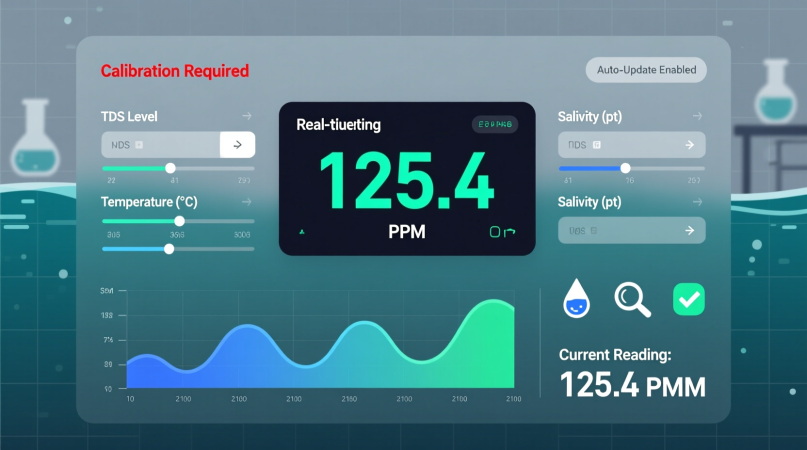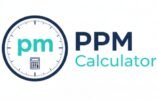
PPM Calculator for Water Quality Testing
Water quality is a critical concern for drinking water, pools, aquariums, agriculture, and many industrial processes. Measuring and understanding the concentration of dissolved substances in water—expressed as PPM (parts per million)—is essential for safety, compliance, and health.
Using a reliable PPM calculator makes these tasks easier, faster, and more accurate. In this guide, I’ll walk you through why PPM matters, how to use a calculator, and how to interpret your results for better water quality management.
Why Use a PPM Calculator for Water Testing?
Understanding PPM in Water Quality
PPM, or parts per million, is a standard unit for measuring very small concentrations of substances in water. It tells you how many parts of a substance are present in one million parts of water. For example, 1 PPM of chlorine means 1 milligram of chlorine per liter of water (1 mg/L).
Why PPM Is Important
- Health and Safety: Regulatory agencies set safe limits for contaminants like nitrates, chlorine, and heavy metals in PPM.
- Equipment Protection: High PPM levels of minerals lead to scaling in pipes, boilers, and appliances.
- Ecosystem Balance: Aquariums, hydroponics, and agriculture rely on controlled PPM levels for optimal plant and animal health.
If you’re new to the concept, see What is PPM? for a simple explanation.
When Should You Use a PPM Calculator?
A PPM calculator is useful whenever you need to:
- Convert between mg/L, ppm, and other concentration units
- Prepare water samples or solutions for testing
- Determine if your water meets safety standards
- Dose chemicals accurately for treatment or maintenance
For a practical overview, check out PPM for Water Testing.
How to Use a PPM Calculator for Water Quality
Step 1: Gather Your Data
Before using a calculator, you’ll need:
- The mass of the substance (in milligrams, mg) dissolved in water
- The volume of the water sample (in liters, L)
If you’re measuring with a digital TDS meter or a test kit, the result is often already in ppm.
Step 2: Enter Your Values
Most PPM calculators are easy to use. For example, with the PPM Solution Calculator:
- Enter the amount of substance (in mg)
- Enter the volume of water (in L)
- Click “Calculate” to see your result in PPM
The calculator instantly applies the standard formula:
PPM = (mg of substance) / (L of water)
Step 3: Interpret the PPM Result
Once you have your PPM value, compare it to recommended safety or guideline levels. For instance:
- Drinking water: Total dissolved solids (TDS) below 500 ppm is generally considered safe (Safe PPM Levels for Drinking Water)
- Pools: Chlorine should be maintained between 1–3 ppm for effective disinfection (Pool Chlorine PPM Calculator)
- Aquariums: Ammonia, nitrite, and nitrate should remain within specific safe ranges to protect aquatic life (PPM for Water Testing)
For a full list of conversions and standards, visit the PPM Conversion Table.
Step 4: Double-Check Your Units and Calculations
Avoid common mistakes by:
- Making sure the mass is in mg and the volume is in L
- Converting grams to milligrams (1 g = 1,000 mg)
- Converting milliliters to liters (1,000 mL = 1 L)
For help with conversions, use the MG/L to PPM Calculator or the PPM to Grams Calculator.
Advanced Water Quality Calculations
Some scenarios require more specific calculations:
Multiple Substances
If you’re measuring several dissolved substances (like in TDS testing), sum the masses before calculating PPM.
Chemical Dosing
For chlorination, fertilization, or pH adjustment, use calculators tailored to your needs:
Troubleshooting PPM Calculator Results
If your result seems off, double-check:
- All input values and units
- Calculator settings (e.g., solution type or density)
- Recent calibrations of your test equipment
For more help, see Troubleshooting PPM Calculator Results and PPM Calculation Mistakes.
Tips for Accurate Water Quality Testing
Use the Right Tools
- Digital meters are quick and reliable for TDS and EC readings
- Test strips are convenient for spot checks, but less precise
- Lab analysis is best for specific contaminants or regulatory compliance
Maintain Your Equipment
Regularly calibrate meters and replace old test kits to ensure consistent results.
Keep Good Records
Logging your PPM readings over time helps you spot trends and act before problems arise.
For more best practices, visit PPM Best Practices for Lab Work.
Frequently Asked Questions
Is 1 mg/L always equal to 1 ppm in water?
Yes, for dilute aqueous solutions, 1 mg/L ≈ 1 ppm because the density of water is very close to 1 kg/L. For more detail, see PPM Formula Variations.
Can I use a PPM calculator for seawater or other liquids?
Yes, but you may need to adjust for density or use specific formulas. See How PPM is Measured in Labs for tips.
Where can I find more calculators?
Explore the full suite at our Calculator Page for conversions, dosing, and more.

Dr. Robert is an industrial chemist specializing in process control, water purification, and quantitative chemical analysis. She has worked with environmental labs and manufacturing facilities to optimize solutions in parts-per-million (PPM) precision and safety compliance.
At PPMCalculator.com, Dr. Robert ensures the accuracy of each calculator and guide through peer review and data validation. Her mission is to make chemistry tools more reliable for engineers, researchers, and students worldwide.
Follow her professional updates on LinkedIn or contact via info@ppmcalculator.com. For More details, Click here
